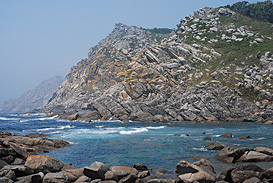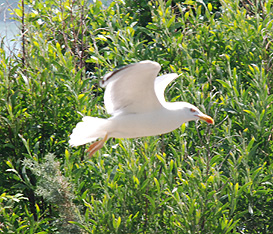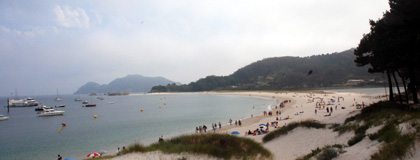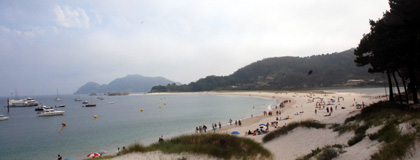
VIGO – After three days of meetings and workshops, the attendants of the 10th FISU Forum in Vigo spent today, June 24th on the Cíes Islands, in the frame of the cultural program of the Forum.
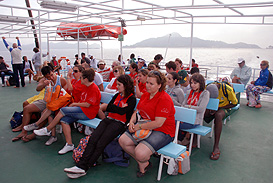 The Cíes Islands are an archipelago off the coast of Pontevedra in Galicia (Spain), in the mouth of the Ría de Vigo. They belong to the parish of San Francisco de Afora, in the municipality of Vigo. They were declared a Nature Reserve in 1980 and are included in the Atlantic Islands of Galicia National Park (Parque Nacional Marítimo-Terrestre das Illas Atlánticas de Galicia) created in 2002.
The Cíes Islands are an archipelago off the coast of Pontevedra in Galicia (Spain), in the mouth of the Ría de Vigo. They belong to the parish of San Francisco de Afora, in the municipality of Vigo. They were declared a Nature Reserve in 1980 and are included in the Atlantic Islands of Galicia National Park (Parque Nacional Marítimo-Terrestre das Illas Atlánticas de Galicia) created in 2002.
Due to the high natural value of this area and to the deterioration it was suffering by human activity, it was declared a Nature Reserve in 1980. The level of legal protection varied until November 21, 2000, when the Galician Parliament unanimously agreed to apply for the status of National Park to the central Government. The Spanish Congress of Deputies signed a definite agreement in June 2002, creating the National Land-Marine Park of the Atlantic Islands of Galicia, formed by a number of archipelagos, islands and cays, namely the Cíes, Ons, Sálvora, Noro, Vionta, Cortegada and the Malveiras.
The marine part of the Park is measured as a 100-meter-wide strip from the shore in low tide. Since 1992 underwater fishing is forbidden in the islands. National Parks are nature areas nearly untransformed by human activity that, based on their landscape, geological or ecosystems possess aesthetic, ecologic, educative or scientific values worth of special protection. Therefore, the activities that alter or endanger the stability of the ecosystem are forbidden. Some traditional activities (like traditional fishing) are allowed as long as they are compatible with the environment and the preservation of natural resources.
Since 1988 the Islands have a status of ZEPA (Zona de Especial Protección para las Aves, Spanish for ‘Special Protection Area for Birds’), and they are included in the Natura 2000 network, which develops European Union Directives in relation to habitats and birds. It contains one of the main colonies of the yellow foot seagull. The ZEPAs are protected mainly to avoid pollution and general deterioration of the places used by birds permanently or during their migrations.
Tomorrow the attendants will continue the 4th sub-theme of the Forum: ‘University Sports and their Academic Recognition.

